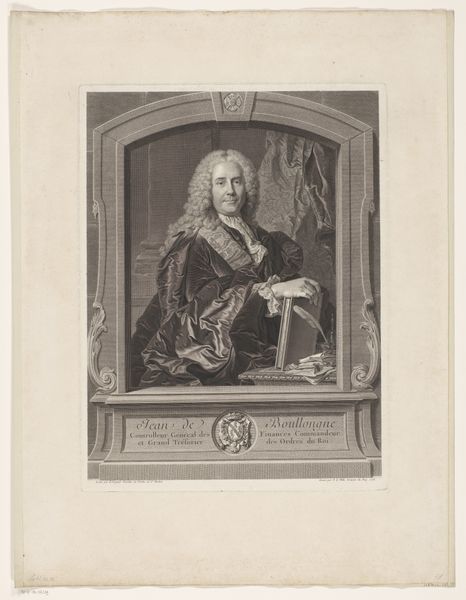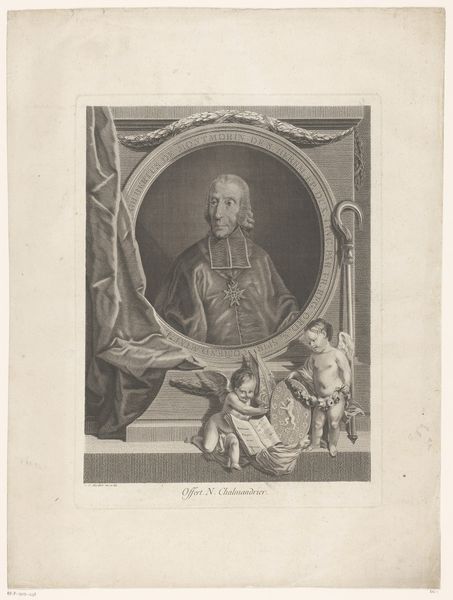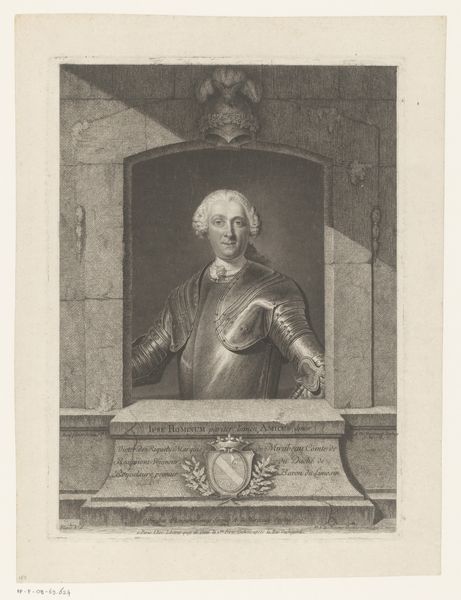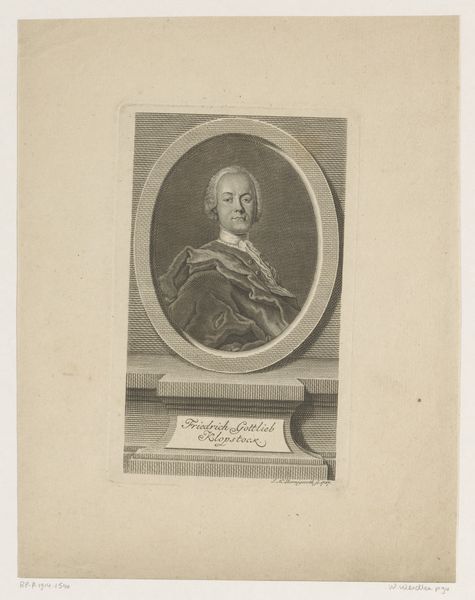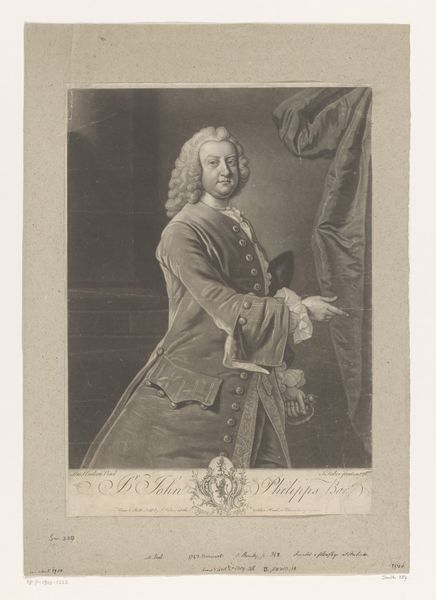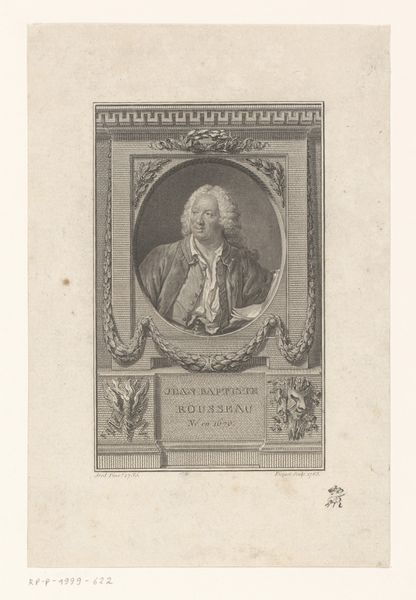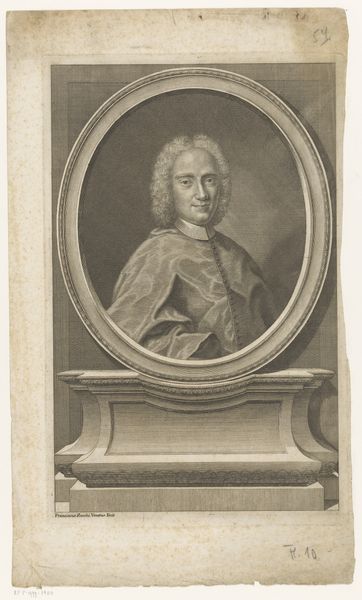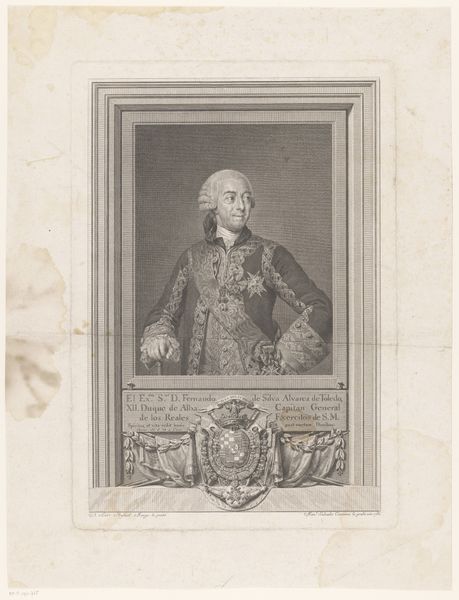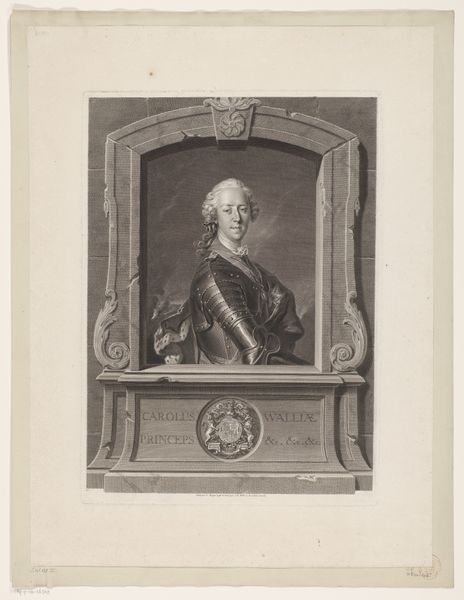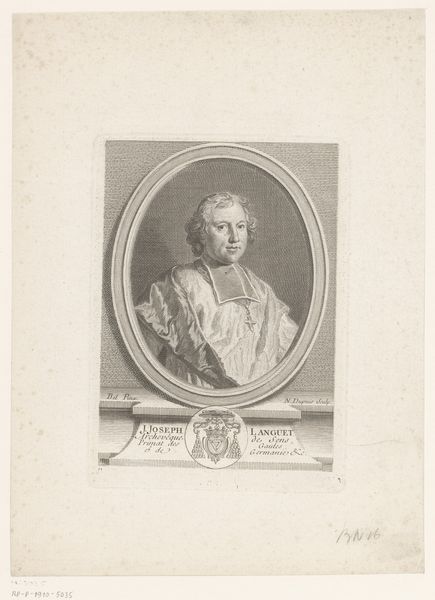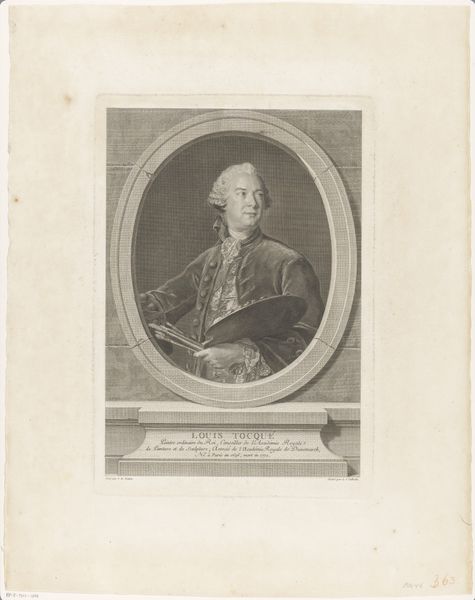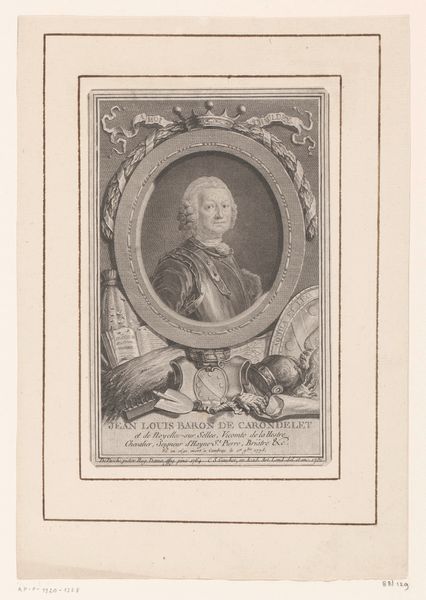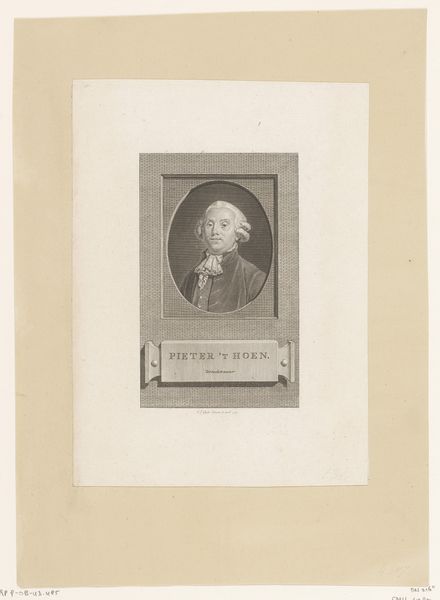
Dimensions: height 448 mm, width 350 mm
Copyright: Rijks Museum: Open Domain
Pierre Etienne Moitte made this portrait of Henry-Philippe Chauvelin using etching, a printmaking technique, during the 18th century. During this time in France, the monarchy and aristocracy were deeply intertwined with the Catholic Church, shaping the social and political landscape. Chauvelin, as an abbé, held a position of power and influence within this structure. Consider how the portrait itself reinforces hierarchical structures. Chauvelin is formally posed, framed by laurel leaves—symbols of status and achievement. These elements convey authority and reinforce his identity as a member of the elite class. But look closer: What emotions do you perceive in his expression? Does he appear confident, or is there a hint of vulnerability? In a time when social roles were dictated by birth and class, portraits like these were not just likenesses but also statements of identity, reflecting the complex interplay between personal identity and social expectation. The French Revolution would soon disrupt this world. This portrait, therefore, stands as a testament to the end of an era.
Comments
No comments
Be the first to comment and join the conversation on the ultimate creative platform.
